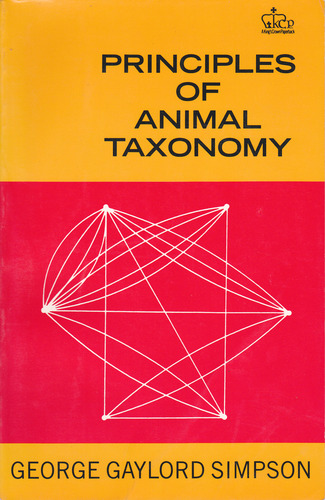Principles of animal taxonomy ebook
Par malley yolanda le lundi, juin 27 2016, 05:02 - Lien permanent
Principles of animal taxonomy by George Gaylord Simpson


Download eBook
Principles of animal taxonomy George Gaylord Simpson ebook
ISBN: 023109650X, 9780231096508
Format: djvu
Page: 131
Publisher: Columbia University Press
They then turn to taxonomy, as they study increasingly complex types of animals. Andrew Pawley (Aukland, 1991), 137-47; Brent Berlin, Ethnobiological Classification: Principles of Categorization of Plants and Animals in Traditional Societies (Princeton, 1992); Douglas Medin and Scott Atran, eds. New York: Columbia University Press. Structural organisation in plants and animals. ( nonchordates up to phylum level and chordates up to class level). This method of classification has changed over time to reflect and accommodate current thinking in science, but primarily the principle has remained unchanged, grouping animals based on shared characteristics. Scarcely a decade ago, Simpson (1961) matter-of-factly concluded that for the protists "evolutionary classification is not yet practicable. This course begins with an overview of key concepts in zoology as students examine the characteristics of the animal cell and discuss heredity and issues of evolution, including natural selection. Ithaca, NY: Cornell University Press. From microscopic investigation to the basics of veterinary medicine, Zoology covers principles of comparative animal anatomy, physiology, and genetics. Taxonomic aids, keys, specimen management ; Systematic and binomial system of nomenclature; Classification of living organisms( five kingdom classification, major groups and principles of classification within each group) Salient features of animal? Biological systematics: principles and applications. The end result was a classification of existing 'data assets' into three main types of animals (although I would later argue the animals were really different zoos.) From this I During the UX design a fundamental principle was data integrity.